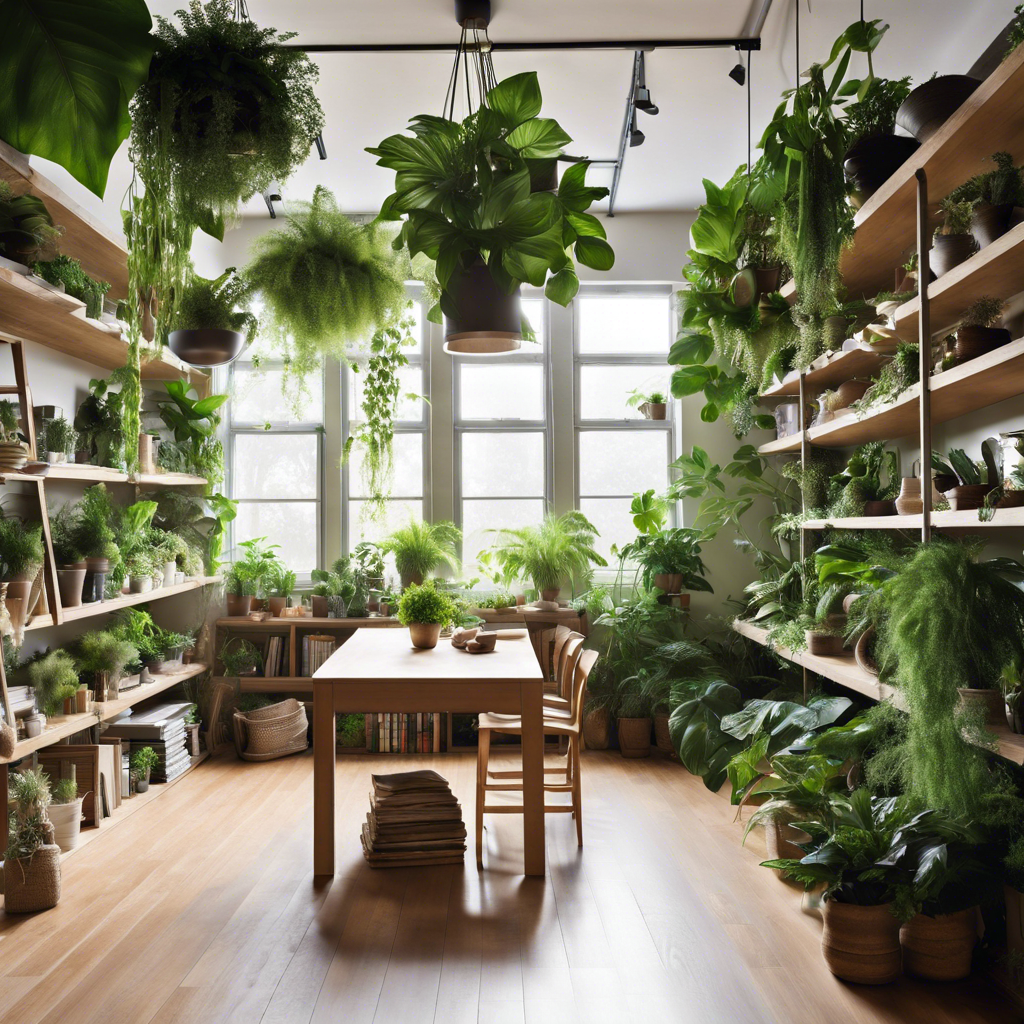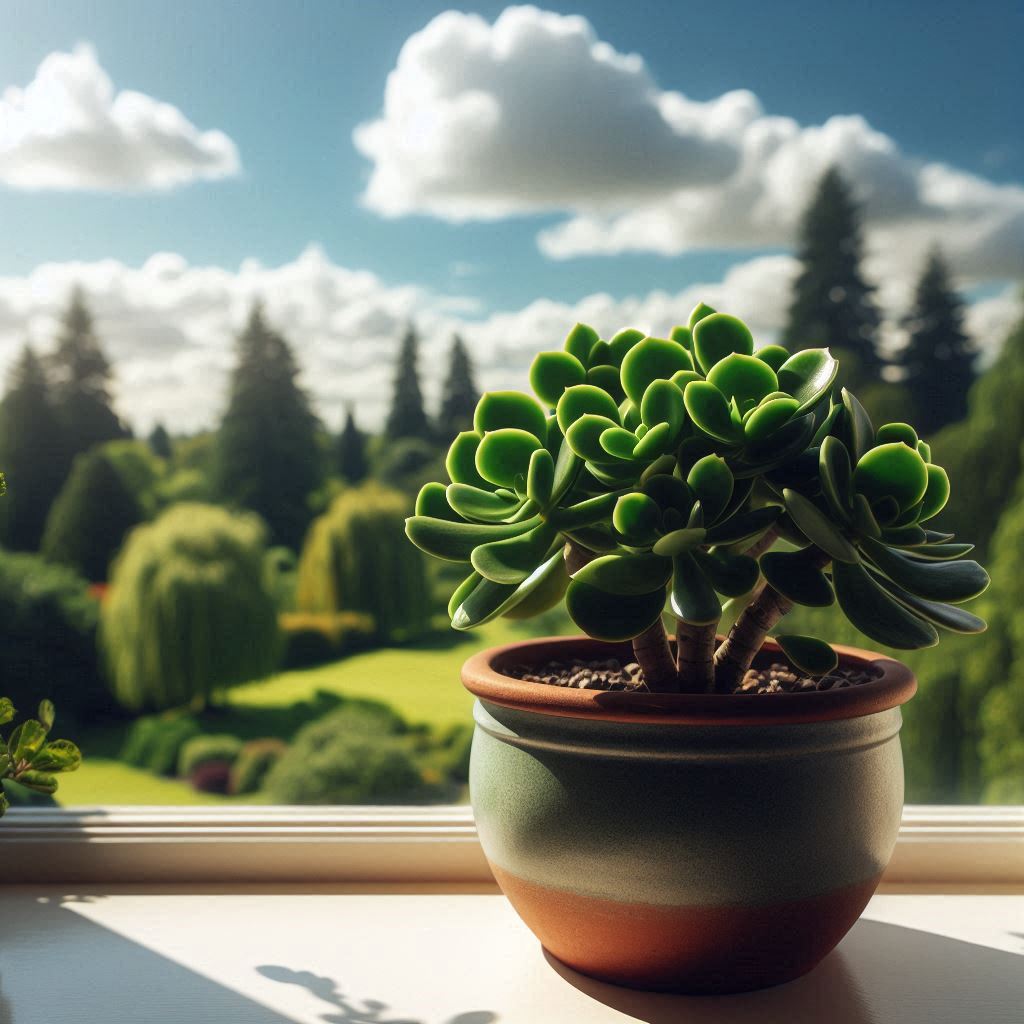
Indoor plants
Jade Plant (Crassula ovata) – The Ultimate Guide to Growing and Caring for This Resilient Succulent


DINKAR
10/22/2024
Introduction
The Jade Plant, scientifically known as Crassula ovata, is a popular succulent that has captured the hearts of plant enthusiasts and casual gardeners alike. With its thick, glossy leaves and tree-like appearance, the Jade Plant is not just a beautiful addition to any home but also a symbol of prosperity and good luck in many cultures. This comprehensive guide will explore everything you need to know about growing and caring for your Jade Plant, including its origins, care requirements, propagation methods, and benefits.
1. What is a Jade Plant?
The Jade Plant is a succulent belonging to the Crassulaceae family and is native to South Africa and Mozambique. Often referred to as the "money plant" or "money tree," it is believed to bring good fortune, prosperity, and success to its owner. The Jade Plant can grow into a small tree-like shape, with thick branches and oval-shaped, fleshy leaves that can store water, allowing it to thrive in dry conditions.
Jade Plants can reach heights of up to 3 feet (1 meter) and are known for their longevity, with some plants surviving for decades when properly cared for. They are relatively low-maintenance, making them ideal for both novice and experienced gardeners.
2. Types of Jade Plants
While Crassula ovata is the most recognized variety, there are several cultivars and related species worth noting:
- Crassula ovata 'Hobbit': This variety features shorter, tubular leaves that resemble the shape of a "hobbit" home. It's a compact plant that adds a unique twist to the traditional Jade Plant look.
- Crassula ovata 'Gollum': Known for its distinctive, tubular leaves that curl at the tips, the Gollum variety is a fun and quirky take on the classic Jade Plant.
- Crassula arborescens: Also known as the silver dollar plant, this species has larger, rounder leaves with a bluish hue, making it a striking alternative to the traditional Jade Plant.
- Crassula perfoliata var. falcata: Commonly referred to as the propeller plant, this variety features unique, propeller-like leaves that grow in a rosette pattern.
3. How to Care for Jade Plants
Caring for a Jade Plant is relatively straightforward, thanks to its drought-tolerant nature. Here’s a detailed guide on how to ensure your Jade Plant thrives:
A. Light Requirements
Jade Plants thrive in bright, indirect sunlight. Ideally, they should receive around 4-6 hours of light per day. A south or west-facing window is perfect for these plants. If they don't receive enough light, they may become leggy and lose their compact shape. If you notice the leaves turning yellow, it may be a sign of too much direct sunlight, which can scorch the leaves.
B. Watering
One of the most crucial aspects of Jade Plant care is proper watering. These succulents prefer to dry out completely between waterings. During the growing season (spring and summer), water your Jade Plant every 2-3 weeks. In the winter, reduce watering to once a month, as the plant enters a dormant phase.
To check if your plant needs water, insert your finger into the soil up to an inch. If the soil feels dry, it’s time to water. Always use well-draining soil and pots with drainage holes to prevent water accumulation, which can lead to root rot.
C. Soil and Potting
Jade Plants thrive in well-draining soil that mimics their natural arid habitat. A commercial cactus or succulent potting mix works well, or you can create your own by mixing regular potting soil with sand or perlite for improved drainage.
Repot your Jade Plant every 2-3 years or when it outgrows its pot. Choose a pot that is slightly larger than the current one to allow for growth, and ensure it has drainage holes.
D. Temperature and Humidity
Jade Plants prefer temperatures between 65°F and 75°F (18°C to 24°C). They can tolerate slightly cooler temperatures but should be protected from frost, as they are not frost-tolerant. A temperature drop below 50°F (10°C) can cause damage.
Humidity levels are not a significant concern for Jade Plants, as they are adapted to dry environments. They thrive in average indoor humidity and do not require additional humidity.
E. Fertilization
While Jade Plants do not require heavy feeding, a balanced, diluted liquid fertilizer can be applied during the growing season (spring and summer) every 4-6 weeks to promote healthy growth. Avoid fertilizing in the fall and winter when the plant is dormant.
4. Propagating Jade Plants
Propagating Jade Plants is easy and rewarding, allowing you to expand your collection or share with friends. The most common methods are leaf and stem cuttings.
Step-by-Step Propagation Guide:
- Select a Healthy Leaf or Stem: Choose a healthy leaf or stem from an established Jade Plant.
- Let It Callus: Allow the cutting to dry and callus over for a few hours or overnight. This step is crucial to prevent rot.
- Plant the Cutting: Once callused, place the cutting in well-draining soil, burying it about an inch deep. Water sparingly.
- Wait for Roots: Place the pot in bright, indirect light and keep the soil lightly moist. Roots will develop in a few weeks, and you’ll see new growth.
5. Common Problems and Solutions
While Jade Plants are generally hardy, they can face a few challenges:
- Overwatering: The most common issue, overwatering can lead to root rot. If leaves turn yellow or mushy, reduce watering and ensure proper drainage.
- Pests: Jade Plants can attract pests like mealybugs and aphids. Treat infestations with insecticidal soap or neem oil.
- Leggy Growth: If your Jade Plant becomes leggy, it may not be receiving enough light. Move it to a brighter location to encourage bushier growth.
- Leaf Drop: Leaf drop can occur due to sudden temperature changes, overwatering, or underwatering. Evaluate your care routine to identify the cause.
6. Benefits of Having a Jade Plant Indoors
Jade Plants offer several benefits, making them a valuable addition to any indoor space:
- Air Purification: Like many succulents, Jade Plants can help improve indoor air quality by removing toxins from the air.
- Low Maintenance: Their drought-tolerant nature makes them ideal for busy individuals or those new to gardening.
- Symbol of Good Luck: The Jade Plant is often associated with prosperity and good fortune, making it a thoughtful gift for friends and family.
- Aesthetic Appeal: With their unique shape and glossy leaves, Jade Plants add a touch of elegance to any room.
Conclusion
The Jade Plant (Crassula ovata) is a stunning, resilient succulent that brings beauty, symbolism, and numerous benefits to your indoor environment. With proper care, this plant can thrive for many years, becoming a cherished part of your home.